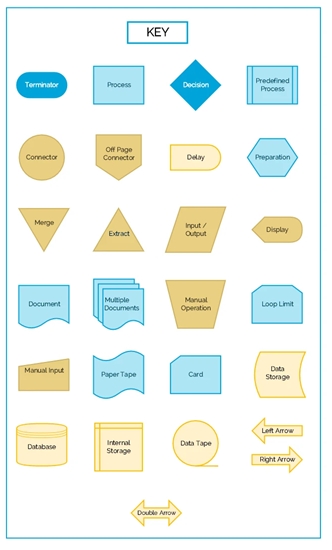Flowcharts are quickly becoming an essential part of most businesses because of how well they can shorten complicated processes. However, a good flowchart is more than just drawing a few simple shapes and directional arrows. It is an art that requires consideration of different techniques and aspects.
These days, you can make a flowchart in just minutes with a simple flow chart creator. With these top tips in creating flowcharts, you can make ones that deliver information effectively while also looking visually appealing.
Keep The Format Consistent
One of the most important aspects of the flowchart is its ability to concise information. Everything should be consistent and free of any unnecessary distractions for the data to flow naturally.
Use the same format for the design elements such as symbols, lines, texts, and spacings to achieve this. If you are new to making flowcharts or want to save time, consider using flowchart maker templates to help you out.
Start From Left To Right
The flowchart’s structure direction is the most fundamental element in making it understandable. Unfortunately, many tend to get carried away by adding too many paths and making navigating too complicated. Instead, keep the information flow going from left to right and top to bottom to keep it easy, both for you to present and for the viewers to comprehend.
Pay Attention To The Color Schemes
A visually pleasing flowchart gives off a good first impression that indicates you are professional and committed to every detail. The colors can be a great tool in subtly highlighting important information and separating the points. You can also use your company’s colors or your client’s logo to match the overall theme.
However, make sure you are strategic and stick to a specific scheme. Try not to use too many colors because the diagram will look messy and distracting. The safest route is to pick white or neutrals so that the text can stand out. If you want to be colorful, choose one primary hue and two to four additional ones that complement or contrast it.
Keep Everything On One Page
The exemplary flowchart can fit on a single page while remaining readable. This ensures that the information is succinct and the flow is seamless and uninterrupted.
When a flowchart cannot be covered in one page, try breaking it down into multiple small ones and linking them together using hyperlinks, additional prints, or footnotes. Another band-aid is to adjust the design, like scaling down the diagram’s size or using a different font.
Be Mindful Of The Connectors
Connectors are the main indicator of a flowchart’s direction and play a massive role in determining its flow. Make sure the arrows are clear and straight so that they are easy to follow.
If they are too long-winded, it could confuse and lose the viewers’ attention. Return flow lines should be placed underneath the shapes to not overlap with other pre-existent connectors.

Use A Split Path For Decision-Making Steps
A flowchart calls for the diamond symbol to present when a task requires decision-making. However, it can be confusing and unclear for those unfamiliar with flowcharts. The diagram also becomes more difficult to navigate as it splits the data flow into two separate directions.
The easiest solution to this problem is by using a split path. It is a great alternate process because it delivers the message in an obvious way that anyone can follow without further explanation needed.

Be Clear & Illustrative About Important Parts
When you want to emphasize a specific part of the chart, let’s start with the visual tools. You can use a bigger and bolder font or shape border to draw attention to the information. A change of color-coding will also do the trick. Besides, annotations and labels are encouraged for adding minor but crucial details.
Explain The Frequently Used Flowchart Shapes
Even though flowcharts are finding their way in the business world, not everyone fully understands their symbols. Having a guide helps clarify the subject and avoid any unnecessary miscommunications. It does not need to be long, just a brief explanation of the meanings.

Basic flowchart symbols that are used frequently
Choose Your Words Wisely
Despite the various usage of images and shapes, words remain an important factor in creating a good flowchart. They play a huge role in ensuring precision, providing contexts, and filling in the gaps. That being said, full-length sentences are not advisable. Instead, keep your texts short and simple but informative and helpful.
Ask For Feedback Before You Present
It is always good to get a second opinion and an outsider’s perspective. If possible, ask for a careful review from a trusted colleague and a close friend. This way, you can better understand what needs to be fixed, what seems confusing in general, and how you can make the information flow more comprehensible.


